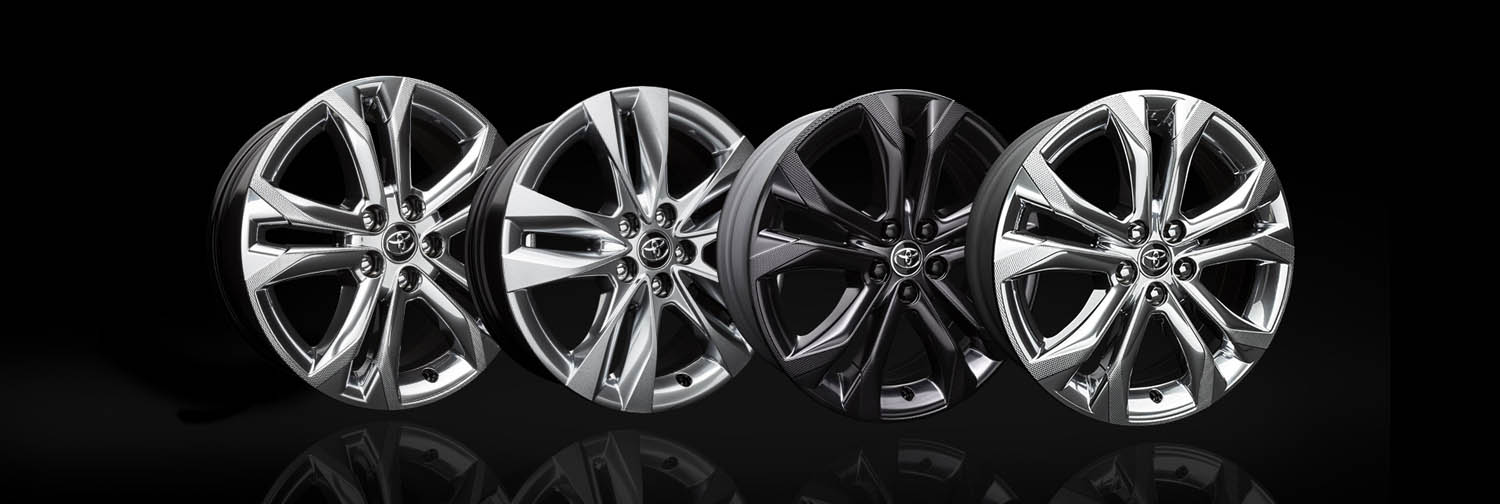Wheel design is a vital aspect of a car’s overall look, but developing wheels can be costly. Stephen Holmes speaks to Lacks Enterprises about its award-winning solution for Toyota, which combines strong aesthetics with fuel efficiency
Variety and differentiation between products are key aspects of modern car design, helping produce more marketable versions and keeping models looking fresh long into their lifecycle.
Wheel design is a critical part of this. They catch the eye and help distinguish a brand’s models across multiple tiers. And with the advent of hybrid and electric vehicles, the importance of lightweighting and the aerodynamic properties of wheels have only increased.
But designing, validating and casting a wide range of options adds huge costs to overall vehicle development, while often restricting designers in terms of materials, textures and form.
Headquartered in Michigan, US, Lacks Enterprises is a Tier One supplier to the automotive industry, which recently delivered an ingenious design for customer Toyota. Lacks was approached by the Japanese car giant about creating six unique wheels across its new Sienna and Tacoma models.
Taking Toyota’s CAD models, designed in Catia, the company split the wheel into two main entities: a hidden ‘backbone’ aluminium wheel that can be optimised for weight; and the Lacks Wheel Trim System, which showcases the styling required by Toyota’s designers and is applied to the face of the wheel.
For the 8-seater Toyota Sienna people carrier, the Wheel Trim System features a composite surface finish permanently bonded to the wheel. The proprietary finishing technologies from Lacks give it the ability to layer chrome, colour and texture seamlessly on the trim, while the optimised backbone wheel means the overall design can be reduced in weight by 12 kg over a traditional cast wheel.
We’ve actually been able to stretch the playing field where the studio person has more freedom and is able to utilise different options
Multiple options
Ryan O’Toole, Lacks director of sales and marketing, explains that as electric vehicles become more prominent, the Wheel Trim System gives car designers more options.
“A lot of times, engineering picks a target weight that then limits the studio’s design,” he says. “We’ve actually been able to stretch the playing field where the studio person has more freedom. If they’re given a weight target of a certain number of kilograms where they’ve got to make a lot of design concessions, now with our technology they’re able to utilise different options.”
Technical capabilities like sculpted bright surfaces, minimal radii and tight sidewall draft tolerances mean the design teams have fewer limitations when creating a wheel design. But weight savings mean that wheel diameters can also be a more visually appealing size while still meeting strict weight criteria. This enabled Toyota to add a 20-inch wheel to its range.
In this way, unique looks can be created for each trim level, without the additional investment required to validate a new backbone or create new tooling for each new style.
Lacks can produce a fully validated new style in around 32 weeks, and less if it is a colour or finish change with no alterations to the mouldings. This allows brands like Toyota to update wheel finishes much faster than usual, promising greater revenues for future models and enabling them to produce limited-production ‘buzz models’ with greater speed and flexibility.

Lacks Enterprises // Accurate prototyping
A key challenge for Lacks is providing a customer with accurate prototypes to help inform decision-making. Generally speaking, 3D-printed prototypes can’t capture super-fine details that have to be cut into the tooling, such as brushed finishes.
Physical finish samples called ‘frogs’ are sent out to designers, showing different finishing options. To speed up the process, the Lacks team also uses a 3D modelsharing platform, Sketchfab, to share a rendering of the design. This enables the viewer to move around a wheel design in detail and even share it with decision-makers in their organisation.
Any changes or ideas can be quickly accommodated by Lacks; having all of its finish and texturing capabilities in-house means it can make adjustments like altering the direction of brush finish quickly and have it back to the client.
O’Toole gives the example of a wheel system texture produced for Ford. “The [designer] actually found a sample of it at Home Depot over here, brought it in to us, and we did it in four different ways and depths! A lot of texture houses out there are kinda like, ‘Here’s your six brush textures.’ That’s it. Whereas we want to say: ‘What do you guys want?’”
Optimised composite surfaces also bring environmental benefits to cars like the Toyota Sienna, by being more aerodynamic and therefore fuel-efficient along the road than traditional ‘open’ steel or aluminium wheels.
By adding composite elements to the lightened aluminium wheel, the method also gives Toyota’s engineers the option to reduce the mass of the other components directly connected to them, such as the suspension, reducing the unsprung vehicle weight for a much more economical drive.
As a result of its work for Toyota, Lacks was named runner-up in the prestigious Sustainable Product Category of the 2022 Altair Enlighten Awards. And according to O’Toole, the company’s pace of development isn’t slowing down any time soon.
More optimisation is possible, including increasing the aerodynamics of the back side of the wheels, he says, as well as introducing even more finishing options that will see its wheels roll on into the future.
This article first appeared in DEVELOP3D Magazine
DEVELOP3D is a publication dedicated to product design + development, from concept to manufacture and the technologies behind it all.
To receive the physical publication or digital issue free, as well as exclusive news and offers, subscribe to DEVELOP3D Magazine here






